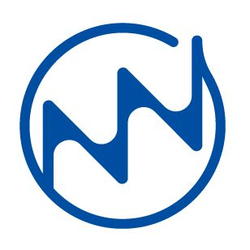Updated July 18, 2024
"Naruhodo" in Japanese: Meaning, Usage and Nuances
“I see!”, “I agree”, “Right!”... As one of the most common expressions of agreeing in Japanese, Naruhodo (なるほど) can mean any of the above and more.
Much like “Daijobu” or “Otsukaresama,” which I explored in separate articles, this is another common and useful word for Japanese learners. This handy word allows you to take part in the conversation by showing agreement and attentiveness.
However, learning how to use it correctly is crucial so you don’t end up sounding like a sycophant or worse,rudely sarcastic.
So, let’s take a deep dive into Naruhodo’s meaning and where the word originated from. I’ll also explore some real-life scenarios where it’s appropriate to use it and tell you what other words you can use instead to spice up your Japanese vocabulary.
Without further delay, let’s begin with the definition.
In this article: 📝
What Does Naruhodo Mean: Naruhodo Definition
As I briefly introduced, Naruhodo has several meanings, like “I agree” or “I see!”, but this wasn’t always the case. Initially, the word meant “as much as possible” in the sense that there’s no more. It can be interpreted as “That’s all there is to it”.
The expression was also used as a way to say “certainly”, as it conveyed the meaning of “a hundred percent” or “at utmost certainty.” Over time, however, it became a way to agree with someone in conversation, leaving its original meaning behind.
Today, the word is used mostly to agree with someone else’s thoughts or to change your mind about a topic when someone presents a better idea. As I’ll explore later, it’s a big part of active listening in daily life and shows that you’re an attentive listener.
Alternatively, the word can be translated as “Indeed” when you want to amplify someone else’s thoughts. This, however, is a slippery slope – as I’ll explain later, overusing it in this context may not be the best look for you.
Finally, the word can also mean that something is only now making sense to you after trying to understand it for a while. Saying “Naruhodo!” in such cases conveys a “Eureka!” moment, and can be translated as something along the lines of “Oh, I got it now!”.
What Is The Polite (Formal) Form of Naruhodo?
If you’ve read my other posts like Thank You in Japanese or Basic Japanese Phrases You Can Use Today, you may wonder if this is the informal, base form of the word and if there’s a polite version. Well, it depends.
From a grammatical standpoint, Naruhodo doesn’t imply an honorific expression. In Japanese, it’s common to use the “Keigo” or the honorific language when talking to those older or at a higher social rank, but this isn’t the case for Naruhodo.
If you want to use it in formal settings, when speaking to someone more distinguished or of a higher rank, you can simply use one of the alternative words I’ll explain towards the end of this post.
That said, you will still hear people say “Naruhodo desu” in public since this is the most general way to use the word politely.
So, people say it without realizing it, but if you’re in a business setting, you should opt for one of the alternatives I’ll share below to play it safe.
The Nuances of Naruhodo Usage: Avoiding Overuse
As I said, Naruhodo is pretty much the Japanese equivalent of “I see” or “Right” in most conversations. It conveys that the person you’re listening to is actually being heard. However, imagine saying “Right” a few times in a row as a response to someone.
It suddenly starts to sound a little sarcastic, doesn’t it?
Just like in English, if you start agreeing profusely with someone in Japanese, they’ll be inclined to think that you aren’t being sincere. So, overusing the word Naruhodo, in this context, can do exactly that.
When conversing with someone, it’s nice to let them know you actually listen by agreeing. However, once you start saying it too many times, the person you’re speaking to may get the feeling that you’re simply done and want to move on, or worse, that they’re boring you.
Overusing Naruhodo can also make you sound less intelligent among certain crowds.
Most people know that simply agreeing with a statement doesn’t bring much to the table. So, unless they have something meaningful to add, people may refrain from speaking altogether.
In such settings, overusing the word Naruhodo or any other words of agreement might make you seem without an opinion of your own. So, reading the room and exercising silence when you think is necessary is vital, to say the least.
Naruhodo: The Key To Being an Active Listener
As I explained, mastering the use of Naruhodo can make you a great active listener. As long as you don’t overuse it, you can show that you’re engaged and paying attention to what’s being said.
After all, Aizuchi, or small verbal acknowledgments, are a prominent part of Japanese culture. As I explained extensively in my post on navigating Japanese communication in the workplace, the concept of being an attentive listener is deemed very important in Japan, and is even seen as a sign of respect.
So, Naruhodo, in such cases, works as a filler word to keep yourself a part of the conversation while the person speaks. However, it should be noted that this word isn’t suitable for your superiors at work.
In fact, saying Naruhodo in a business context is tricky. It can mean that you’ve considered what the person has said and that you deem it to be true, which can be perceived as condescending or as if you know better than them.
The Silent Disagreement, and Naruhodo in a Negative Context

While we have mostly talked about the agreeable meaning of Naruhodo so far, there’s also a secondary meaning that can convey that you don’t agree, but you’re keeping it silent.
Most of the time, you’ll likely understand whether someone truly agrees with you or is in a respectful disagreement so long as you have the bare minimum observation skills.
There’s a certain enthusiasm that comes with agreeing with someone or thinking that they’re, indeed, right. It’s certainly a different look than a person who keeps to themselves to avoid breaking the harmony in a social setting, which is an important theme in Japanese culture. I explored this deeper in other articles, like how to say sorry in Japanese.
Other than reading the room, however, another negative meaning to Naruhodo can come from being tongue-in-cheek or sarcastic. This is more common among close friends, but you can also use this sarcastically if someone’s oversharing, talking for too long, or explaining something wildly uninteresting to you.
It’s sort of like saying “Right, right” to someone, and should be avoided when speaking to people who you aren’t close with in this context.
Variations of Naruhodo: Soudesuka(そうですか), Sokka(そっか)
As I’ve cautioned previously, by this point, you know not to use Naruhodo in business settings or when speaking to someone older and less familiar with you. So, what should you use instead?
Let’s explore your options.
“そうですか” (Sōdesu ka)
A more formal word than Naruhodo, “そうですか” (sōdesu ka) is another versatile word that’s used in many ways in daily life. So, depending on the context, it can mean a variety of things including affirmation, agreement, approval, or understanding.
Sometimes it can be used as a question, like “Is that so?” or “Really?”. If it’s a simple reply, however, it just means “I see” or “Gotcha.”
“かしこまりました” (Kashikomarimashita)
You’ll hear this phrase frequently in a business or workplace setting.
“かしこまりました” (Kashikomarimashita) can be used when speaking to your boss, and it doesn’t have the agreement nuance of Naruhodo. Basically, it conveys that you understood the assignment or the feedback you received. It can also be used to mean “Certainly.”
In addition to business settings, you may also hear this word when you’re out shopping or dining, as shopkeepers and restaurant waiters like to use this word as well. After all, in Japan, customers are often considered equivalent to gods or “kami sama” in the hospitality and service industry.
“おっしゃる通りです” (Ossharu Toori Desu)
Another phrase fit for business settings, おっしゃる通りです (Ossharu Toori Desu) means “Just like you said” or “As you said.” So, it’s used in agreement but has more of a humble honorific tone, which is why it’s good to say when speaking to superiors or clients at work.
The phrase also means “That’s right”, so you can safely use it to agree with your bosses or superior.
“左様でございますか” (Sayou De Gozaimasu Ka)
More common among the elderly, saying the phrase 左様でございますか (Sayou De Gozaimasu Ka) also means “Exactly” or “Certainly” and is used in agreement.
Sayou by itself is sort of an old-timey word, but people from older generations still use it when speaking to one another.
“そっか” (Sokka) or “そうか” (Sō ka)
If you’re looking for another casual word that carries the same meaning as Naruhodo, you also have “そうか” (sō ka) at your disposal.
This is, as I said, an informal word used when you understand or agree with something, like “I see” or even “Oh, right!” if someone reminds you about something you had forgotten. One nuance regarding this word is that it’s usually used at the beginning of a sentence.
An even more casual form of this word can be “そっか” (sokka). This, however, should generally be used with your friends and family.

Conclusion and Exemplary Cases For When To Use Naruhodo
As you can see, this versatile word can mean several different things depending on the context, some of which can even be interpreted negatively.
So, to go over the main points we’ve discussed,
While Naruhodo originally meant “As much as possible,” nowadays, it means “I understand”, “I agree”, or “I see.”
While it’s considered aizuchi, which means it can work as a filler word when you’re in the listening role in a conversation, overusing it is unadvisable as it can look sarcastic.
It can be an indicator of agreement, but it can also be used as a silent disagreement when said neutrally or non-enthusiastically.
Other words, such as Soudesuka(そうですか) or Sokka(そっか), can be used as an alternative to Naruhodo.
That’s all there is to it! You now have all the basics you need to start using Naruhodo in your daily life. While this is all I have on Naruhodo, if you’re a Japanese learner, you may also want to check out my posts on the best Japanese learning tools and if attending a full-time Japanese language school is the right move for you right after this.
Get Job Alerts
Sign up for our newsletter to get hand-picked tech jobs in Japan – straight to your inbox.







